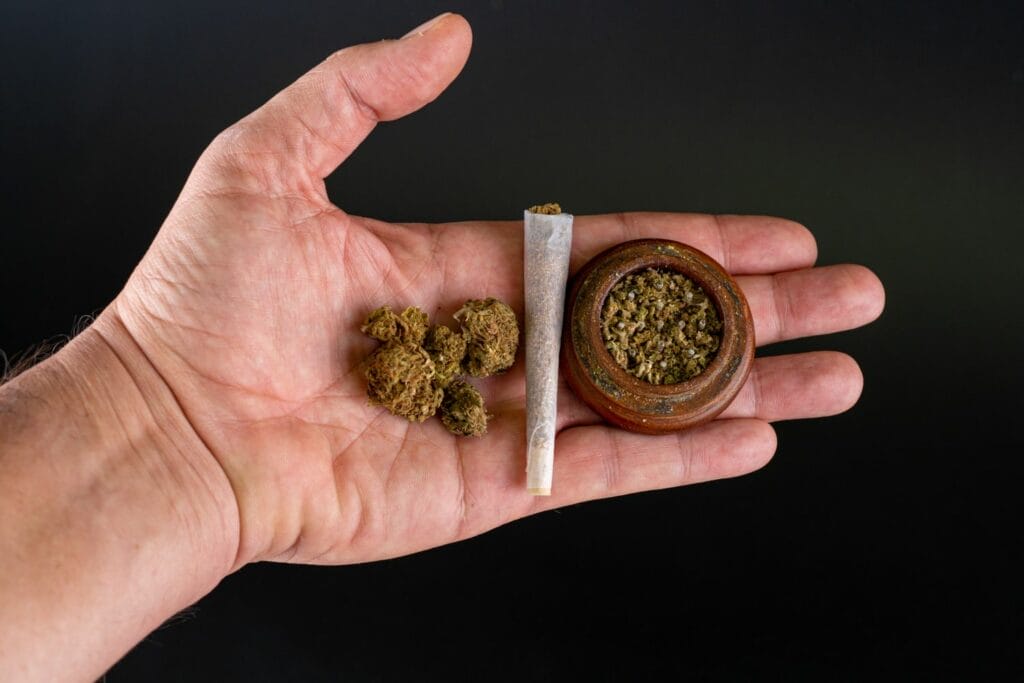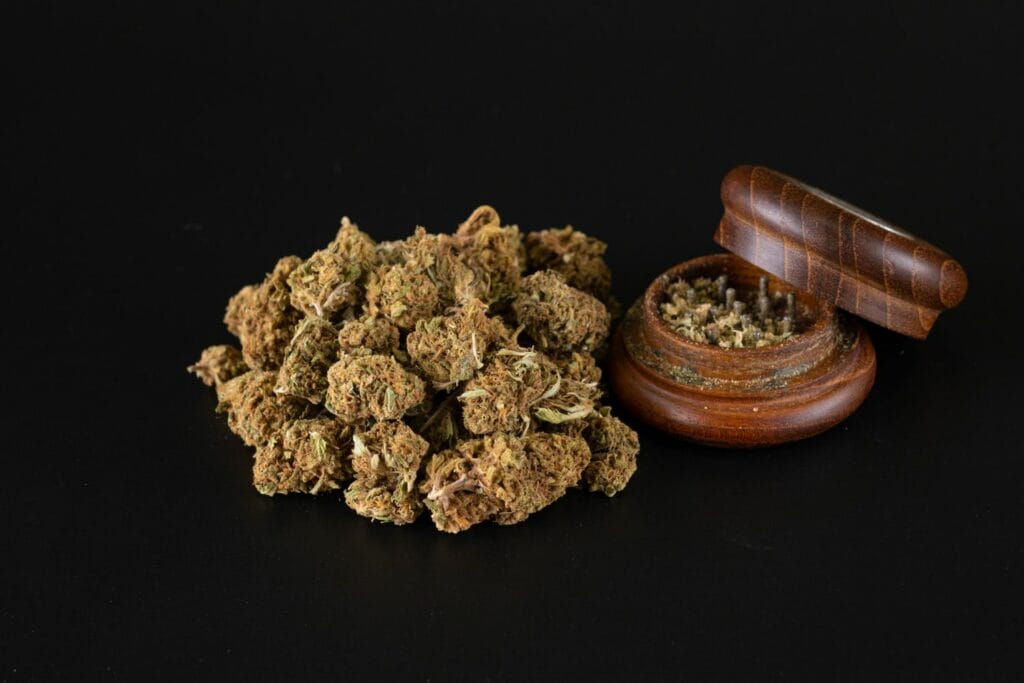Gone are the days of “high THC, nothing else matters.” This new wave of preferences fuels the burgeoning premium cannabis market, where locally-grown, small-batch flower shines brighter than mass-produced products
Stand out from the crowd by craft showing a selection of craft cannabis sourced from reputable growers, highlighting unique strain characteristic and search “buy craft weed canada”.
Table of Contents
Key Takeaways
- Craft weed is setting new standards in the cannabis industry by prioritizing quality over quantity.
- Craft weed is distinguished from commercial cannabis by factors such as small-batch production, organic cultivation practices, emphasis on unique strains, and rigorous quality control.
- The rise of craft production is changing the dynamics of the cannabis industry, with consumers showing loyalty to premium brands and larger companies pivoting towards small-batch cultivators.

High-Quality Craft Cannabis
High-quality craft weed has emerged as a beacon of quality and innovation in the industry, setting new standards for potency, flavour, and variety. With meticulous cultivation techniques and a dedication to small-batch production, craft growers deliver a product free from contaminants and bursting with unique strains like Miracle Alien Cookies.
In British Columbia, the epicentre of best craft cannabis, a thriving community of cultivators and enthusiasts is reshaping perceptions and pushing the boundaries of what’s possible.
Craft Weed vs. Commercial Weed
| Craft | Commercial |
| Produced in small batches by local growers | Grown in larger-scale operations |
| Cultivated using organic or sustainable farming practices | Utilizes synthetic fertilizers and pesticides for growth |
| Emphasizes unique strains with distinct flavours and effects | Focuses on popular strains for mass-market appeal |
| Quality control is a top priority with personalized care | Quality control can be less stringent due to volume production |
| Growers are more knowledgeable and passionate about their product | Operational scale may limit the personal touch and specific knowledge of the product |
| Products are tested rigorously for consistency and quality | Testing protocols may vary, with some products not undergoing the same level of scrutiny |
What is a AAAA Craft?
Quality Control
Growers carefully monitor each plant, ensuring they receive precise nutrients and care throughout their growth cycle. Every single bud is hand-trimmed with precision—no shortcuts or mechanical processes that can compromise the integrity of the final product.
Craft growers also focus intensely on curing, allowing buds to slowly dry in controlled conditions.
Small Batch Sizes
Growers nurturing these limited quantities can closely monitor each plant’s development. They ensure the plant receives the necessary water, nutrients, and care.
By keeping batches small, producers also maintain higher cleanliness and health safety standards. They apply organic composts and natural fertilizers more effectively than larger operations could manage.
Grown by Organic Methods
Craft weed is cultivated using organic methods, including natural fertilizers and composts. This approach optimizes the plant’s potential while reducing its carbon footprint.
By prioritizing sustainable farming practices, craft producers aim to promote environmental responsibility and deliver a product that aligns with the principles of eco-conscious cultivation.
Small-scale growers employ certified organic techniques to ensure the purity and quality of their cannabis products. They prioritize natural inputs like worm castings and composted materials to create an optimal growing environment for their plants, enhancing their crop’s yield and potency.
Differences in Potency
Craft also has higher potency than commercial cannabis due to the careful selection and breeding of specific strains. Growers focus on maximizing the cannabinoid and terpene content in their plants, resulting in more potent and flavourful products.
This attention to detail and genetic manipulation allows craft cannabis to offer a more intense and unique experience for consumers, aligning with the demand for high-quality, potent marijuana.
These methods also contribute to the differences in potency between craft and commercial cannabis. Craft growers employ meticulous growing techniques that can enhance the psychoactive effects of the final product.
How Craft Cannabis is Changing the Industry
Consumers are showing loyalty to craft and premium brands due to perceived consistent quality. Hence, the trend of large Canadian cannabis producers is pivoting towards small-batch cultivators to cater to a growing demand for high-quality “premium” marijuana products.
Partnerships and acquisitions between large licensed producers and craft companies are becoming more common. The big companies are also learning how to make premium weed from the small ones. Craft producers are evaluated based on their cultivation techniques, finishing methods, team expertise, and regulatory compliance.
Overall, the emphasis is shifting from mass production to quality, with craft cannabis gaining traction in the Canadian market.
Market Potential
Market research forecasts a compound annual growth rate (CAGR) of over 25% for the craft cannabis market in the coming years. This optimistic outlook is driven by several factors, including evolving consumer preferences towards higher-quality products and the expanding approval of cannabis in various regions globally.
Market Analysis by Types
- Dry: Includes the traditional flower buds that are consumed by smoking or vaporizing.
- Oil: Refers to the extracted oils that can be used for various purposes, such as making edibles or concentrates.
- The other market: Includes products like topicals, capsules, tinctures, and more, which offer alternative consumption methods and can cater to diverse consumer preferences.
Market Industry Research
- Recreational market: Growers focus on cultivating high-quality strains with distinct flavours, effects, and potency, catering to the preferences of many enthusiasts.
- Medical market: Craft is produced to provide therapeutic benefits to patients. This is essential to adhere to strict quality standards and produce strains with specific medicinal properties.
Emerging Trends in Global Craft Cannabis
- Growing demand for organic and sustainably produced cannabis products, driving the adoption of natural cultivation practices.
- Increasing focus on quality and unique strain varieties. Consumers now seeking differentiated and premium products.
- The market is experiencing a rise in cannabis-based wellness and medicinal products as more countries embrace it for medical purposes.
- The industry is witnessing a shift towards direct-to-consumer sales and online platforms and exploring innovative extraction techniques to enhance product potency and purity.
Major Market Players
Canopy Growth Corporation
Canopy Growth is one of the largest and most prominent players in the craft cannabis market. Founded in 2013, the company is based in Ontario, Canada.
It has experienced exponential growth over the years, becoming a global industry leader. The market size for Canopy Growth is estimated to be several billion dollars. In its most recent fiscal year, the company generated sales revenue of approximately $399 million.
Aurora Cannabis Inc.
Headquartered in Alberta, Canada, the company has experienced significant expansion and growth, both domestically and internationally.
Aurora has become one of the world’s largest companies, with several billion dollars market size. In terms of sales revenue, the company generated approximately $249 million in its most recent fiscal year.
Cronos Group Inc.
Founded in 2012 and is a globally diversified cannabis company based in Ontario, Canada.
Cronos has been a key player in the craft cannabis market and has witnessed substantial market growth.
The market size for Cronos Group is estimated to be in the billions. In their most recent fiscal year, the company generated approximately $108 million in sales revenue.
Why Commercial Weed is Losing
- Existential Pricing Challenge: The declining prices of marijuana pose an existential challenge to the cannabis industry, with tight margins affecting growers, retailers, and other stakeholders.
- Market Saturation in Mature Markets: States with longer-standing cannabis programs may be reaching “peak weed,” with lower prices failing to attract new buyers and resulting in tight profit margins.
- Strategic Responses: Companies in the industry are responding to the pricing challenges by implementing deep merchandising and price strategies and adopting a store-by-store approach to address market dynamics.
- Impact on Sales and Growth: Falling prices have resulted in reduced sales in some markets, despite efforts to stimulate demand through deals and promotions.
Craft Cannabis: High Quality Products
The rise of craft production is reshaping the landscape of the cannabis industry, with an increasing emphasis on quality over quantity. This shift is prompting larger companies to pivot towards small-batch cultivators and driving partnerships and acquisitions within the industry. Despite challenges such as pricing pressure and competition with the black market, the craft market shows promising growth potential, driven by evolving consumer preferences.
Frequently Asked Questions
What are the Best Craft Strains?
While the “best” strains are subjective, popular choices include those with unique terpene profiles, offering distinctive flavours and effects.
Can I Grow Craft Weed Myself?
Yes, with the right knowledge and resources, it’s possible to grow craft weed at home. Emphasizing organic practices, careful strain selection, and attentive care throughout the growth and curing processes are key to achieving craft-quality cannabis.
What is Craft Cannabis in Ontario?
What Is Craft? At the OCS, we define craft as dried flower that’s hang-dried, hand-trimmed, hand -packaged and grown in a small-batch facility (one that produces less than 10,000 kg of dried cannabis a year, to be exact).
Related Articles:




